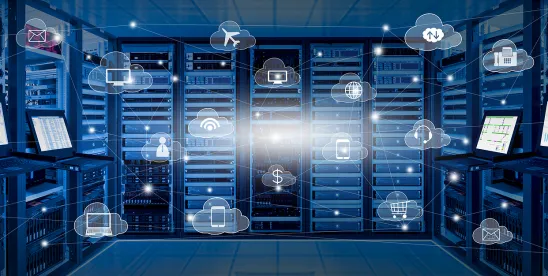The data center market has seen remarkable growth, reaching unprecedented levels in 2023 and is largely fueled by advances in cloud computing and artificial intelligence (AI).
In response to growing demand, US tech giants are projected to invest over $200 billion in capital expenditures in 2024, primarily to bolster AI infrastructure. As the market expands and technology evolves, access to critical resources such as energy and land has become a pressing issue. This growth requires robust technical infrastructure, innovative business models, and comprehensive legal frameworks to support the development and secure operations of data center services.
Protecting your interests is paramount in this rapidly developing market. Here are four key considerations to keep in mind when negotiating a data center lease:
1. Power
Globally, there is a growing concern about the immense amounts of energy required to support this infrastructure, with global data center power use expected to double this year. Due to the sheer amount of power required to power these services, the terms of data center leases regarding power generally look very different than leases for other asset classes.
When drafting a data center lease, the first key consideration is securing a reliable power infrastructure with enough redundancies to prevent any outages or degradations of power which would adversely affect data center operations. This frequently means securing a main utility feed through at least one electricity substation, and if possible, a backup from a second substation for extra reliability, as well as generators and batteries to serve as additional backup. Clearly spell out in the lease the minimum and maximum power the tenant can expect and ensure there is separate metering for accuracy. For data center providers, Power Purchase Agreements with energy providers, buying energy on exchanges, or even setting up solar panels or other sustainable energy sources onsite can serve as additional methods for securing power.
2. Cooling and Humidity Control
Efficient cooling and humidity control are critical considerations for data centers, where significant amounts of power are consumed and sophisticated machinery operates continuously. This infrastructure is essential due to the considerable heat generated, particularly by AI servers. These facilities often require robust cooling infrastructure such as large-scale air conditioning units, heat exchangers, condensers, and sophisticated pump systems for distributing cooling mediums like air and water throughout the premises.
To satisfy the cooling requirements, data centers often adhere to standards set forth by organizations like the American Society of Heating, Refrigerating and Air-Conditioning Engineers . These standards provide guidelines and best practices for designing and implementing effective cooling systems that ensure both energy efficiency and operational reliability. By adhering to such standards, data center operators can optimize cooling efficiency, minimize energy consumption, and enhance overall facility performance, thereby supporting the uninterrupted operation of critical AI and computing infrastructure.
3. Redundancy
In data centers, where power and temperature control are paramount, ensuring redundancy in the case of potential outages or degradations is critical to maintain uninterrupted operations. Outages can stem from factors such as power loss, fluctuations in power quality, temperature or humidity deviations, unauthorized access, or human errors.
While providers typically integrate redundancy measures to mitigate outages, a well-defined lease without ambiguous language is vital for safeguarding all parties involved. Commonly used redundancy frameworks include the “tier” system, which ranges from one to four, indicating varying levels of redundancy, and the “series of nines” system, in which higher numbers signify greater reliability in uptime percentages. Uptime percentages refer to the amount of time that data center services are available without interruption, with three nines (99.9%) indicating less reliability compared to five nines (99.999%). These frameworks precisely define the extent and reliability of redundancy provided by the data center provider, ensuring clarity and protection for lessees and lessors alike.
4. Connectivity
Connectivity is the lifeblood of modern data centers, playing a pivotal role in their operational efficiency and reliability. The ability of data centers to maintain robust connections through fiber networks or other high-speed channels, ensures businesses can leverage scalable computing resources and meet the demands of an ever-evolving digital economy.
As such, understanding and prioritizing connectivity in data center operations and leases is paramount. Ideally, lessees should have the ability to establish circuits and cross-connects throughout the data center, including within their leased space, without incurring additional costs. Pay attention to any restrictions regarding which carriers are permitted into the facility.
Kendall Murphy contributed to this article



 />i
/>i
